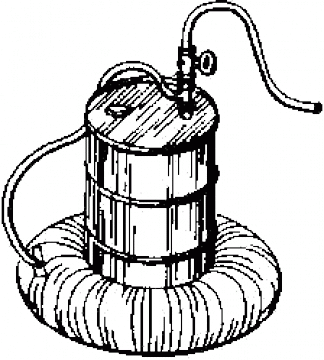Linked to this page (as you might notice from the menu above and linked in the list immediately below) are several pages offering information— and the best free information on the Internet— about how to build four of the most common types of small, tropical-climate digesters. Check it out. You’ve got resources for building
- a 55-gallon drum digesters (which are only good for experiments),
- an ARTI-type digesters (which are good, but they leak lots of biogas),
- an underground masonry/concrete digesters (which are world’s most common type), or
- a plastic bag digesters (the world’s cheapest digesters!).
If you want to find out about a digester that will work well in the U.S.— where, as you may have noticed, we do not have a tropical climate— you should visit this page.
Now if you’ve looked around, you know that there are plenty of sites that promise information that might be similarly described— several are linked from these pages— but here we are going to give you both the pros and the cons, not just the rah-rah; and this information will help you decide among the designs described on the web. (Read on and see if it’s not so…)
But even if you can build a digester using the plans you can find using these pages, you may not be able to get the best use out of your digester. The critical things you need to know about biogas are that you have to keep the organic stuff you put in wet, warm, and pH balanced. And even if you know all that, you might still have a lot of questions. What should you feed it? How much and often? What can you do with the effluent that comes out of it? How can you use the biogas? (For example, how can you modify a stove to burn biogas?) Can you use biogas to provide light?
All these questions are answered in The Complete Biogas Handbook. And gee whiz, if you’re all that interested in practical biogas, you should probably buy it— it’s not expensive ($25); see that book cover up above and to the right?— because after all, hello, that is one real good reason this site exists.
Meanwhile take a look at what’s here, starting with…
| Next: | How to build a 55-gallon digester |

